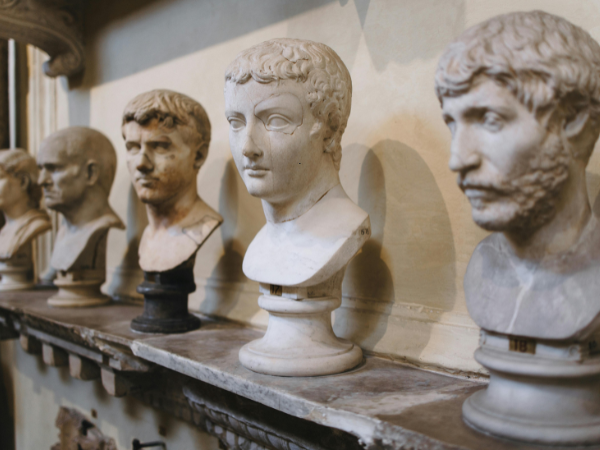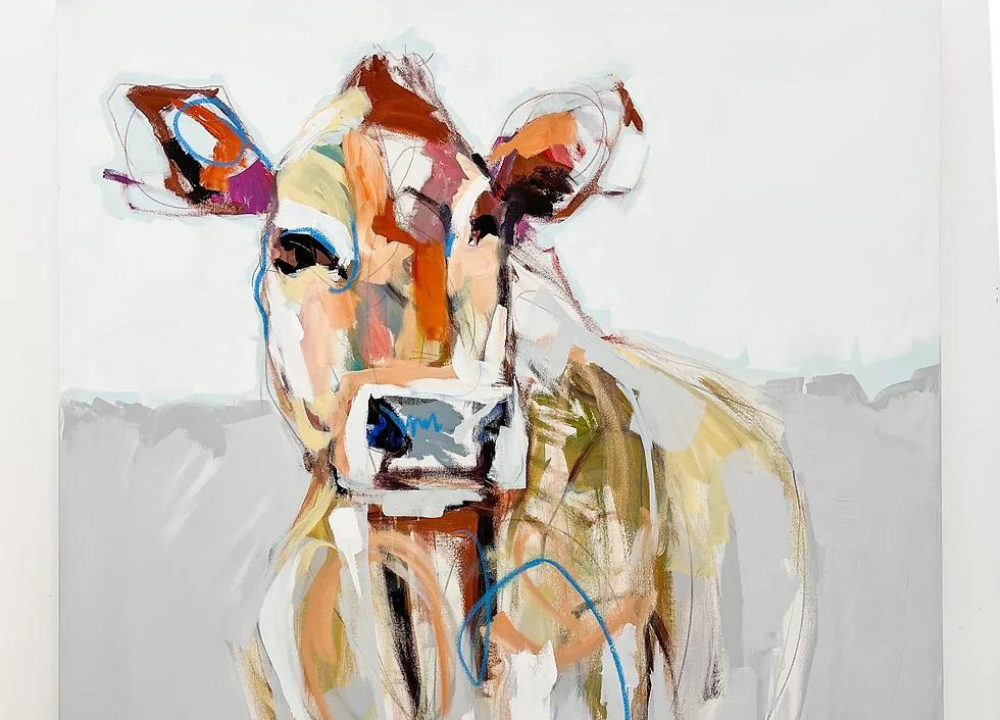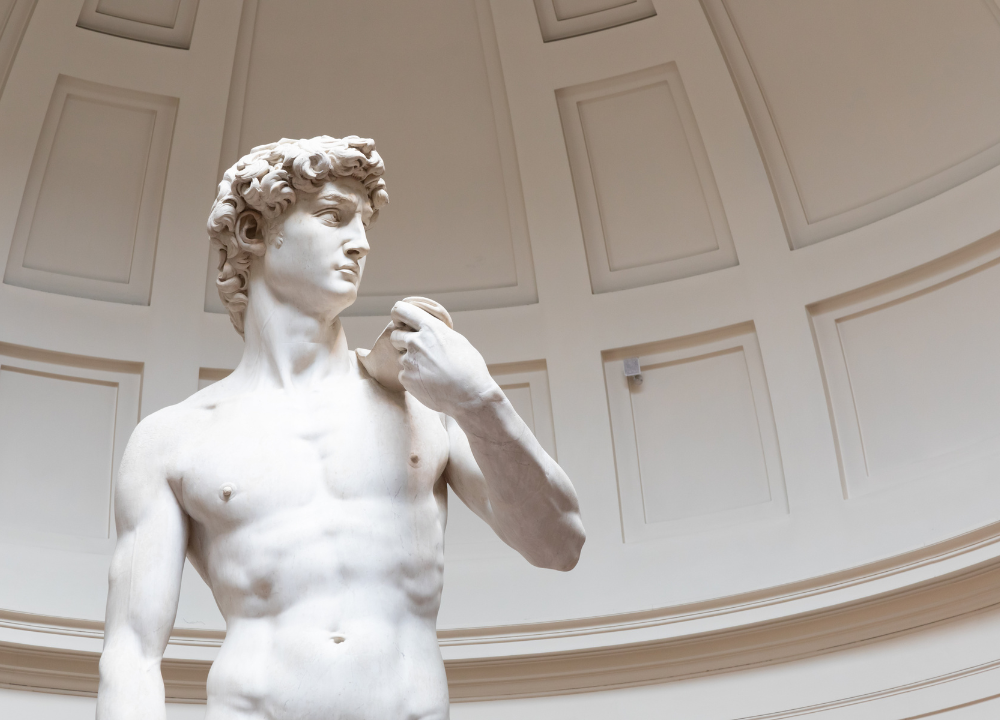When you step outside the lines, you invite creativity, surprise, and originality into your work. You’ll discover the key moments when bending or breaking art rules isn’t just allowed—it’s what makes your art unforgettable.
Role Of Rules In Art
Art is a world full of rules and guidelines. These rules help artists learn the basics and create works that others can understand. But sometimes, breaking these rules makes art more exciting and fresh. The role of rules in art is to give a strong base.
Foundations Of Artistic Techniques
Rules in art often start with basic techniques. These rules teach how to use lines, shapes, colors, and space effectively. Artists learn these foundations to create balanced and clear works. For example, the rule of thirds helps in placing objects so the image feels natural and interesting.
Some key foundations include:
- Perspective: Shows depth and distance in a drawing or painting.
- Proportion: Keeps the size of objects in relation to each other correct.
- Color theory: Guides on combining colors that look good together.
- Composition: Organizes elements to create a pleasing layout.
These foundations create a strong base for any artwork. Artists practice these rules again and again. Mastering them builds confidence. After that, they can choose to bend or break rules to make art more unique.
| Technique | Purpose | Effect of Breaking the Rule |
|---|---|---|
| Perspective | Creates depth | Can make art look flat or surreal |
| Proportion | Keeps size realistic | May create interesting distortions or focus |
| Color Theory | Combines colors well | Creates strong emotions or surprise |
| Composition | Organizes elements | Can lead to dynamic or chaotic feel |
Historical Context Of Art Guidelines
Art rules have changed through time. Different periods in history had their own styles and guidelines. Artists followed these rules to fit their culture and audience.
For example:
- Renaissance: Focused on realism and perfect proportions.
- Baroque: Used strong contrasts and dramatic lighting.
- Impressionism: Broke some classical rules to show light and movement.
- Modern Art: Often ignored traditional rules to explore new ideas.
This shows that art rules are not fixed. They reflect the ideas and needs of their time. Artists who break rules often start new movements and styles.
Historical art rules helped create famous works. They also gave artists a way to communicate with their audience. Yet, the best art sometimes comes from changing those rules to express new feelings or views.
Reasons Artists Break Rules
Artists often face a set of traditional rules and techniques that guide their work. Yet, many choose to break these rules to create something fresh and meaningful. Breaking rules in art allows artists to explore new ideas, express their individuality, and push boundaries.
Encouraging Creativity And Innovation
Creativity thrives when artists step outside the usual guidelines. Rules can sometimes limit imagination by setting fixed ways of doing things. By breaking these rules, artists open doors to new possibilities and original ideas.
Here are some ways breaking rules sparks creativity:
- Exploring new techniques: Artists try unusual materials or methods.
- Combining styles: Mixing different art styles creates unique results.
- Improvisation: Allows spontaneous creation without strict plans.
Innovation often comes from questioning the status quo. For example, abstract art broke away from realistic depictions, introducing new ways to show emotions and concepts. This change gave artists freedom to express ideas beyond the ordinary.
| Traditional Rule | Rule-Breaking Approach | Creative Outcome |
|---|---|---|
| Use of realistic colors | Using unexpected, bright colors | Expresses mood and feeling more vividly |
| Symmetrical composition | Asymmetrical or chaotic layouts | Creates dynamic and engaging visuals |
| Clear subject focus | Blurring or abstracting subjects | Invokes curiosity and deeper interpretation |
Expressing Unique Perspectives
Every artist has a personal story and view of the world. Following set rules may hide these individual voices. Breaking rules allows artists to share their own experiences and ideas in a clear way.
Unique perspectives come alive when artists:
- Use symbols or styles tied to their culture or background.
- Mix different influences that traditional art may not accept.
- Present subjects from new angles or with unexpected emotions.
Rule-breaking helps artists stand out. It brings attention to stories that might otherwise be overlooked. For example, street artists use public spaces and non-traditional methods to connect directly with communities.
Benefits of expressing unique perspectives:
- Creates emotional connections with viewers.
- Encourages empathy and understanding.
- Broadens the art world’s diversity.
Challenging Conventional Norms
Art has long reflected society’s rules and values. Sometimes, artists break art rules to question or criticize these norms. This challenge can inspire thought and change.
Breaking norms in art often involves:
- Using taboo or controversial subjects.
- Rejecting traditional beauty standards.
- Disrupting expected formats or presentations.
This approach forces viewers to rethink what they accept as normal. For example, Dadaism challenged the idea that art must be beautiful or logical. It showed that art could be absurd or provocative to make a point.
Ways challenging norms impacts art and society:
| Impact | Explanation |
|---|---|
| Raises awareness | Brings hidden social issues to light. |
| Encourages dialogue | Starts conversations on difficult topics. |
| Inspires change | Challenges people to think differently and act. |
Famous Rule-breaking Examples
Artists who break traditional rules often create powerful, lasting impacts. These rule-breaking moments shape art history and inspire new ways of seeing. Famous examples show how bending or ignoring rules leads to fresh ideas and creative freedom.
Impressionism And Light Experimentation
Impressionism broke many art rules of the 19th century. Artists rejected precise details and smooth finishes. They focused on capturing light and its changing effects. This shift changed the way people viewed paintings.
Key traits of Impressionism include:
- Loose brushwork: Short, quick strokes created a sense of movement.
- Bright colors: Artists used pure colors, not mixed on the palette.
- Outdoor scenes: Painters worked outside to capture natural light.
These artists ignored the old rule that paintings must be detailed and realistic. Instead, they showed moments in time with light and color. Their work often looked blurry or unfinished to critics at first.
| Artist | Famous Work | Rule Broken |
|---|---|---|
| Claude Monet | Impression, Sunrise | Using loose brush strokes and focusing on light over detail |
| Edgar Degas | The Ballet Class | Unusual angles and cropping of subjects |
Their rule-breaking made art more about feeling than exact representation. It opened doors for modern art styles later.
Abstract Art And Form Deconstruction
Abstract artists broke rules by removing clear subject matter. They focused on shapes, colors, and lines instead of realistic images. This was a big change from traditional art.
Abstract art challenges viewers to find meaning beyond what is visible. Artists like Kandinsky and Mondrian used form and color to express emotions and ideas.
- Forms broken down: Objects appear as simple shapes or patterns.
- No clear story: Paintings do not tell a straightforward tale.
- Focus on emotion: Colors and shapes create moods or feelings.
Abstract art ignores the rule that art must look like real life. It invites viewers to think and feel in new ways.
| Artist | Key Work | Rule Broken |
|---|---|---|
| Wassily Kandinsky | Composition VII | Using color and shape to express emotion, no clear subject |
| Piet Mondrian | Composition with Red, Blue, and Yellow | Reducing forms to basic geometric shapes and primary colors |
This rule-breaking expanded what art could be. It made art a tool for abstract thought, not just visual copy.
Street Art And Social Commentary
Street art breaks rules about where and how art should be shown. It appears on public walls, often without permission. This form of art speaks directly to the public and tackles social issues.
Street artists use their work to:
- Challenge authority: Art often criticizes politics or social problems.
- Reach all people: It is accessible outside galleries and museums.
- Create community: Many works involve local stories or voices.
Traditional art rules say art belongs indoors and should be carefully preserved. Street art rejects this. It thrives on being temporary and bold.
| Artist | Notable Work | Rule Broken |
|---|---|---|
| Banksy | Girl with Balloon | Creating art illegally on public walls with political messages |
| Jean-Michel Basquiat | Untitled (SAMO Tag) | Using graffiti to bring street culture into the art world |
This rule-breaking makes street art powerful and urgent. It forces viewers to think about the world around them.
Impact Of Breaking Rules On Viewers
Breaking the rules in art often creates a powerful impact on viewers. It challenges what people expect and opens new ways to experience creativity. This impact goes beyond just looking at art; it moves emotions, sparks ideas, and can even change how art itself develops over time.
Eliciting Emotional Responses
When artists break the rules, they often reach viewers on a deep emotional level. Unexpected colors, shapes, or forms can surprise and engage people. This surprise makes viewers feel something strong, such as joy, sadness, or curiosity.
Ways rule-breaking triggers emotions:
- Shock: Sudden changes in style can cause a quick emotional reaction.
- Empathy: Unusual portrayals of people or scenes can make viewers feel connected.
- Wonder: New and strange ideas can inspire awe and fascination.
- Discomfort: Sometimes, breaking rules can create unease, making people think deeply about the art.
For example, an abstract painting that ignores perspective can make viewers focus more on feelings than on the subject. This emotional connection often stays longer than a simple, rule-following artwork.
Provoking Thought And Dialogue
Art that breaks rules often makes people think differently. It can challenge ideas about beauty, meaning, or culture. This provocation leads to conversations and debates, both among viewers and within society.
How rule-breaking art provokes thought:
- Questioning norms: It asks people to rethink what is normal or accepted.
- Highlighting issues: It can bring attention to social or political problems.
- Encouraging interpretation: Viewers must find their own meaning, which sparks discussion.
These artworks become a starting point for dialogue. They invite viewers to share opinions and learn from each other. The conversation itself can be as important as the art.
Inspiring New Artistic Movements
Breaking the rules in art has often led to new styles and movements. When artists step outside traditional limits, they create fresh paths for others to follow. This can change the direction of art history.
Examples of rule-breaking inspiring movements:
| Art Movement | Rule Broken | Impact |
|---|---|---|
| Impressionism | Traditional detail and clear lines | Focus on light and color, new painting techniques |
| Cubism | Single viewpoint and realistic shapes | Multiple perspectives, abstract forms |
| Abstract Expressionism | Representational art and precise form | Emphasis on emotion and spontaneous creation |
These movements influenced many artists and changed what people expect from art. Rule-breaking keeps art alive and growing by encouraging innovation and new ideas.
When To Break Rules Effectively
Breaking rules in art can lead to fresh ideas and unique creations. But knowing when to break rules effectively is key. It means understanding the rules well enough to bend or break them in ways that add value. This helps artists create work that feels both new and meaningful, rather than random or confusing.
Mastering The Basics First
Before breaking any rules, an artist must have a solid grasp of the basics. This includes learning traditional techniques, understanding color theory, composition, and the history of art styles. Knowing these basics builds a strong foundation.
Why is this important?
- Clarity: Knowing the rules helps you recognize what you want to change.
- Confidence: Skills make rule-breaking purposeful, not accidental.
- Control: You can choose how and when to break rules thoughtfully.
For example, a painter who masters perspective can then choose to distort it for effect. A writer who knows grammar can bend it to create a unique voice.
| Basics | Why Important |
|---|---|
| Color Theory | Guides effective color use and when to break harmony rules. |
| Composition | Helps balance elements before experimenting with layout. |
| Technical Skills | Ensures control over medium, allowing intentional deviations. |
Without mastering basics, rule-breaking can confuse or weaken the message. Learning first leads to stronger, more meaningful creativity.
Knowing The Purpose Behind The Break
Breaking rules must have a clear purpose. It is not just about being different or rebellious. The best rule-breaking adds meaning, emotion, or new perspectives to the artwork.
Ask these questions before breaking a rule:
- What effect do I want to create?
- How will this change make the artwork stronger?
- Does breaking this rule help tell the story better?
Purposeful rule-breaking can:
- Create surprise and interest
- Express unique emotions
- Challenge common views
- Highlight important details
For instance, a photographer might overexpose a photo to evoke a dreamlike feel. A poet may ignore rhyme to focus on raw emotion.
Without purpose, breaking rules risks:
- Confusing the audience
- Making the work feel random
- Weakening the overall message
Strong art comes from choices that serve the artist’s vision, not just from breaking rules for its own sake.
Balancing Tradition And Innovation
Great art often blends tradition with new ideas. This balance respects the past while pushing boundaries. Artists who balance these elements create work that feels familiar yet fresh.
Ways to balance tradition and innovation:
- Use classic techniques but add your twist
- Draw inspiration from old styles but tell new stories
- Mix different art forms or mediums
Consider this simple table:
| Traditional Element | Innovative Twist | Effect |
|---|---|---|
| Realistic portrait | Use bright, unnatural colors | Creates emotional impact |
| Classical sonnet | Change rhyme scheme | Modernizes the form |
| Black and white photography | Add digital glitches | Mixes old and new technology |
Balancing tradition and innovation helps art connect across time. It honors what came before, while showing what is possible next.




